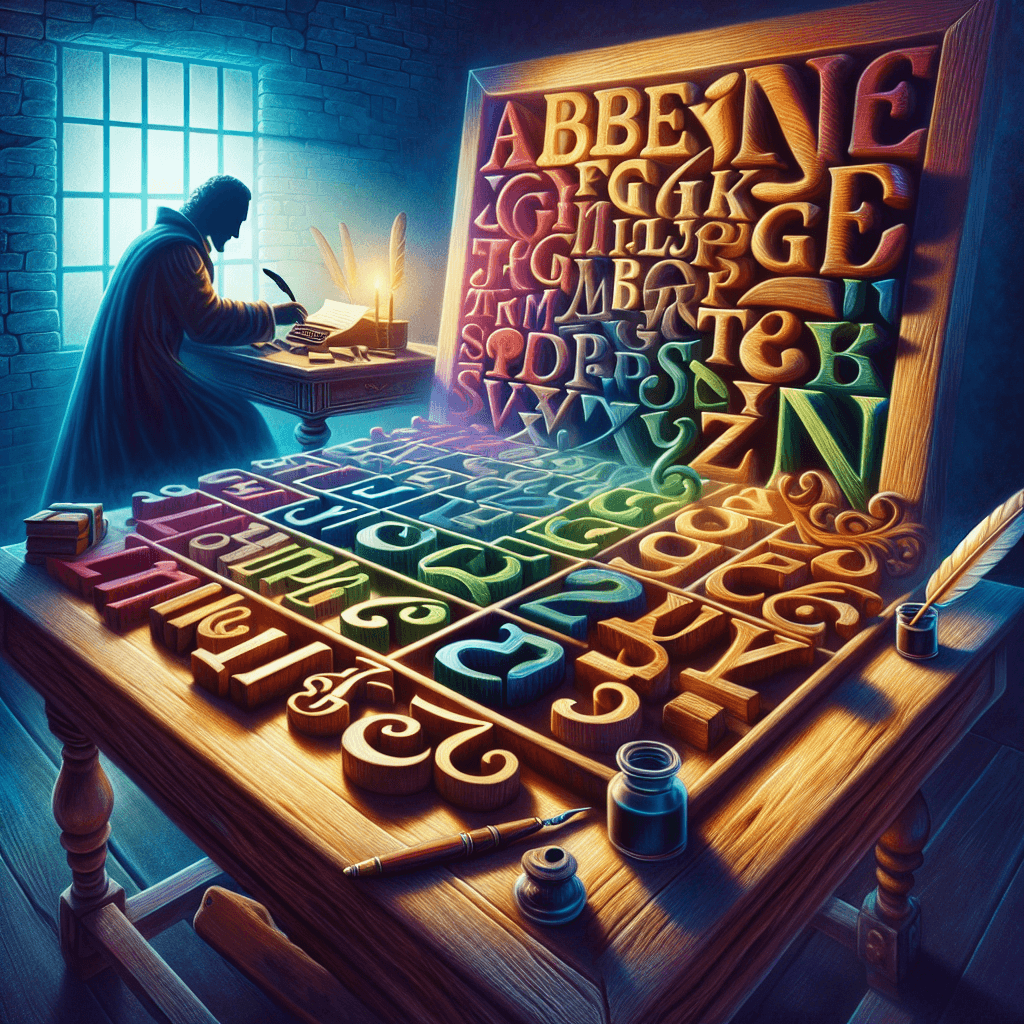Why are the letters of the alphabet in that specific, seemingly random order
From ancient Phoenician traders to Roman scribes, the sequence of our alphabet is no random jumble but a 3,000-year-old story of how letters were borrowed, forgotten, and stuck together by historical chance.


Too Long; Didn't Read
TLDR: The alphabet's order is not random. It was established thousands of years ago by ancient Semitic languages, passed through the Greeks and Romans to us, and stuck around due to tradition.
The ABCs of History: Why Are the Letters of the Alphabet in That Specific, Seemingly Random Order?
From the moment we learn to sing the alphabet song, its order is drilled into our minds. A, B, C, D… it feels as natural as breathing. But have you ever stopped to ask why? Why does 'B' follow 'A'? Why is 'Z' at the very end? The sequence appears completely random, with no phonetic or logical pattern. Is it just a historical accident we're all stuck with?
The truth is, the order of our alphabet is anything but random. It is a linguistic artifact, a 3,000-year-old story passed down through empires and cultures. The familiar sequence we use today is the result of a long chain of borrowing, adaptation, and refinement. This post will unravel this ancient mystery, tracing the alphabet's journey from its Middle Eastern origins to the 26 letters that shape our written world.
The Ancient Roots: A Phoenician Foundation
The story of our alphabet's order begins around 1050 BCE with a civilization of master sailors and traders: the Phoenicians. Living in the coastal region of the modern-day Middle East, they developed a revolutionary writing system. Unlike the complex hieroglyphs of Egypt, the Phoenician alphabet consisted of just 22 simple characters, each representing a consonant sound.
This system was efficient, easy to learn, and incredibly adaptable. As the Phoenicians traded across the Mediterranean, they spread their alphabet along with their goods. Crucially, they also spread its order. Archaeological discoveries of ancient tablets, known as abecedaries, show the Phoenician letters inscribed in a fixed sequence. This order starts with letters like 'aleph, bet, gimel, and dalet—the ancient ancestors of our A, B, C/G, and D. While the exact reason for their original order is lost to history, some scholars theorize it may have been used as a mnemonic device for teaching and remembering.
The Greek Makeover: Adding Vowels
Around the 8th century BCE, the Greeks adopted the Phoenician alphabet. This was a monumental step, but they faced a challenge: the Phoenician script had no letters for vowel sounds, which were essential in the Greek language. Their solution was ingenious.
Instead of reinventing the wheel, the Greeks repurposed several Phoenician letters for consonants they didn't need.
- The Phoenician letter 'aleph (a soft glottal stop) became Alpha (A).
- 'He became Epsilon (E).
- 'Ayin became Omicron (O).
For the most part, the Greeks kept the letters in the established Phoenician order. They added a few new letters to the end to represent sounds unique to their language, but the core sequence—Alpha, Beta, Gamma, Delta—was a direct inheritance. This Greek adaptation was the critical link that transformed a consonant-only script into the world's first true alphabet, complete with both consonants and vowels.
Roman Refinements: Crafting the Latin Alphabet
The alphabet then traveled from Greece to Italy, where it was adopted by the Etruscans and, subsequently, by the Romans. The Romans tailored the script to fit the sounds of the Latin language, creating the direct ancestor of the English alphabet we use today. They made several key changes that still affect our modern order:
- The Story of C and G: The Romans inherited the Greek letter Gamma, which became 'C' in Latin. Initially, 'C' stood for both the 'k' and 'g' sounds. To resolve this ambiguity, they added a small bar to the 'C' to create a new letter, 'G'. They then inserted 'G' into the seventh spot, displacing 'Z', a letter they deemed unnecessary for Latin at the time.
- The Return of Z: The Romans later re-adopted the letter 'Z' (along with 'Y') from Greek to help transcribe Greek loanwords. Since its original spot was taken, they simply tacked it onto the very end of the alphabet, where it remains today.
- Late Arrivals: Some letters we use are even more recent. The letters 'J' and 'U' didn't become distinct from 'I' and 'V' until the Middle Ages, and 'W' began its life as a ligature (two 'V's or 'U's joined together). Their placement reflects their later evolution.
A Legacy Etched in Order
So, the next time you recite the alphabet, remember that its "random" order is actually a living piece of history. It's a fossil record of linguistic evolution, preserving a sequence set by Phoenician traders, modified by Greek innovators, and finalized by Roman administrators. Each letter’s position tells a story of adaptation and cultural exchange that spans millennia.
The alphabet is not a random collection of symbols but one of the most enduring legacies of the ancient world. Its order is a testament to the interconnectedness of human history, reminding us that the simple act of writing connects us directly to the civilizations that first gave a voice to the written word.


